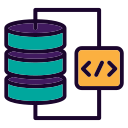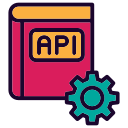Devii is not another climate data buzzword.
Devii helps you unlock weather and climate intelligence.
Transform any meteorological or climate database into a powerful GraphQL API in minutes. Connect observation networks, streamline inter-agency data exchange, and deploy AI-powered forecasting tools that protect lives and infrastructure—without drowning in integration delays.
Turn fragmented weather data silos into unified climate intelligence in minutes, not budget cycles.
End the interoperability nightmare. Devii delivers secure infrastructure for modern climate and weather operations.
Disaster preparedness depends on rapid, accurate data sharing between federal agencies, state offices, research institutions, and international partners. GraphQL revolutionizes climate and weather intelligence by enabling precise queries across multiple secure systems with surgical accuracy. One query can combine NOAA buoy readings, NASA satellite imagery, USGS hydrology data, and FEMA risk models—giving decision-makers the complete picture they need to protect communities.
Path 1:
"I'm an environmental technologist, and I need to see Devii work with real-world observation systems."
Show me the capabilities. Connect to radar feeds, IoT sensor networks, and climate archives to build cross-agency weather intelligence solutions.
This GraphQL query demonstrates fetching comprehensive storm assessments—including real-time radar data, ocean temperatures, wind shear readings, and flood risk models—all from separate secure networks in real time. Traditional weather APIs require dozens of individual requests across systems, delaying the forecasts and warnings that save lives.
With Devii, complex environmental data fusion becomes as simple as writing one query. No more multi-year integration projects or grant-funded “pilot” purgatory.
Traditional Weather APIs vs. GraphQL:
Legacy approach requires multiple system calls:
GET /noaa/buoy-data/current
GET /nasa/satellite/imagery/latest
GET /usgs/river/levels
GET /nws/forecast/models
GET /fema/disaster-risk/zones
GraphQL gets everything instantly with compliance-aware data handling. Perfect for AI systems that need complete situational awareness to power predictive models.
Devii deployment is faster than REST API development, because severe weather events don't wait for your engineering team to get through tedious details.
Four rapid steps to transform scattered environmental data into unified decision-making intelligence.
1
Connect Networks
Link radar, satellite imagery, climate archives, and IoT sensor networks. Devii maps schemas automatically—no multi-year mapping projects.
2
Configure Security
Deploy FedRAMP-compliant access controls. Set role-based permissions for meteorologists, researchers, and emergency planners while enforcing data-use agreements.
3
Validate Operations
Review auto-generated climate data models with complete cross-domain relationships mapped. Privacy and compliance officers can approve data flows in hours, not budget cycles.
4
Deploy Capabilities
Your production-ready API is live!
Launch your secure API immediately. Build severe weather dashboards, climate risk platforms, or AI-powered early warning systems that work across the entire environmental enterprise.
Why Developers Choose Devii
Devii transforms isolated climate datasets into unified intelligence platforms in minutes, not program years. With compliance baked in, instant interoperability, and zero-integration complexity, you can focus on what matters: protecting communities and ecosystems.
Forget APIs that dump entire archives when you need one indicator. GraphQL delivers exactly what forecasters request. Imagine that—technology that gives meteorologists what they actually need, when they need it, without waiting for IT work orders.

Cross-System Data Fusion
Eliminate dangerous information gaps by connecting NOAA, NASA, USGS, FEMA, and international partner networks instantly. Analysts see the complete environmental picture without switching between dozens of portals.

AI-Powered Forecasting
Purpose-built for climate and weather AI applications: storm prediction, climate risk modeling, and intelligent resource allocation powered by cross-domain data.

Rapid Capability Development
Devii eliminates the integration bottlenecks that slow program launches from 3 years of contract work to 3 hours with one developer.

Data Governance & Compliance
Advanced RBAC ensures field offices see regional data, researchers access global datasets, and partners receive only authorized feeds—while PBAC enforces data classification, sovereignty, and sharing agreements.

Interagency & International Collaboration
Scale from a local forecast office to multinational climate monitoring without architectural rewrites. Perfect for NOAA–NASA projects, FEMA–USGS disaster planning, and WMO global networks.

Like climate science teaches us:
Don’t assume. Measure.
Listen to meteorologists and climate analysts already using Devii to unify weather and climate data.

Having Devii as my backend let's me focus on building the user experience of my application without having to worry about the backend.. because it just works and is managed by a couple of simple config files.
Jase Kraft
PaveWise
